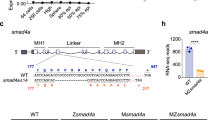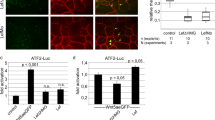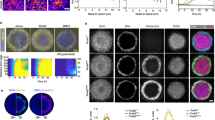Abstract
The Eph class is the largest family of receptor tyrosine kinases and has been shown to play various roles in neural development including axon pathfinding and neural crest migration. EphB2 associates with transmembrane ligands Ephrin-B1 and -B2, which leads to tyrosine phosphorylation of both the ligands and receptor and is presumed to regulate cell-to-cell interactions by bidirectional signaling. We have investigated the biological effects of the EphB2-induced signal in the early stage of Xenopus laevis development. Xenopus EphB2 transcripts were detected maternally and were expressed at equal levels between the ventral and dorsal halves of the gastrulae, with expression increasing after the late gastrula stage. EphB2 mRNA expression in dorsal marginal zone explants from gastrulae increases during later development while that in ventral explants does not. We show here that microinjection of RNA encoding EphB2 into a ventral blastomere of embryos induced a partial secondary dorsal axis which consisted of neural tissues, notochord and somites. Analysis with molecular markers verified that the microinjected EphB2 dorsalized the mesoderm of ventral marginal zone explants. These dorsalizing effects of EphB2 in both the whole embryo and ventral explants were inhibited by the coinjection of RNA encoding the soluble form of Ephrin-B1. Furthermore, co-injection of EphB2 and Ephrin-B1 RNAs synergistically enhanced the dorsalization effect. These data show that the interaction between EphB2 and its ligands including Ephrin-B1 causes signaling events which lead to dorsal development, and strongly suggests the existence of proteins which mediate the dorsalization induced by EphB2 in early stage embryos of Xenopus laevis.
This is a preview of subscription content, access via your institution
Access options
Subscribe to this journal
Receive 50 print issues and online access
$259.00 per year
only $5.18 per issue
Buy this article
- Purchase on Springer Link
- Instant access to full article PDF
Prices may be subject to local taxes which are calculated during checkout
Similar content being viewed by others
Author information
Authors and Affiliations
Rights and permissions
About this article
Cite this article
Tanaka, M., Wang, DY., Kamo, T. et al. Interaction of EphB2-tyrosine kinase receptor and its ligand conveys dorsalization signal in Xenopus laevis development. Oncogene 17, 1509–1516 (1998). https://doi.org/10.1038/sj.onc.1202068
Received:
Revised:
Accepted:
Published:
Issue Date:
DOI: https://doi.org/10.1038/sj.onc.1202068



